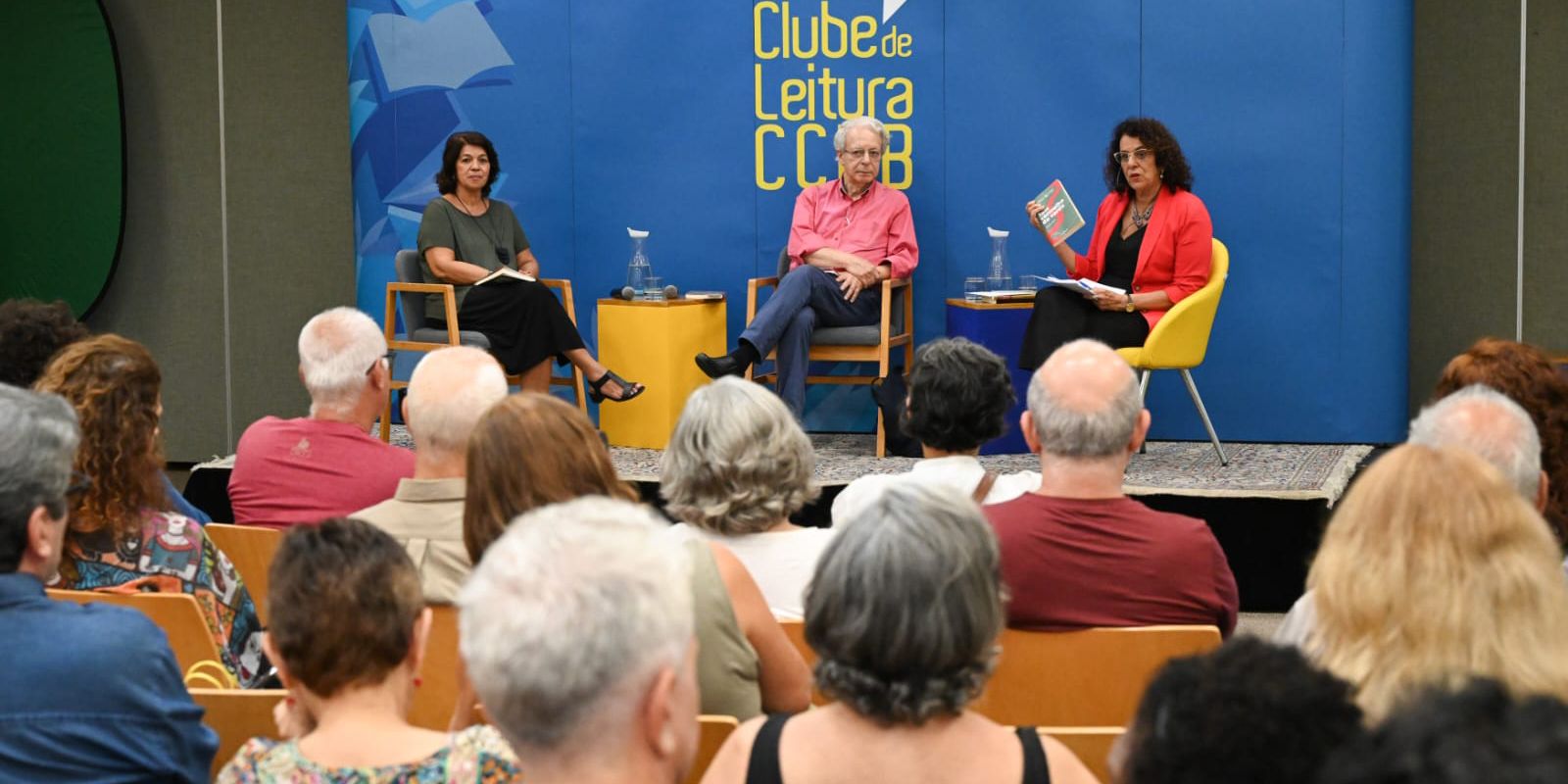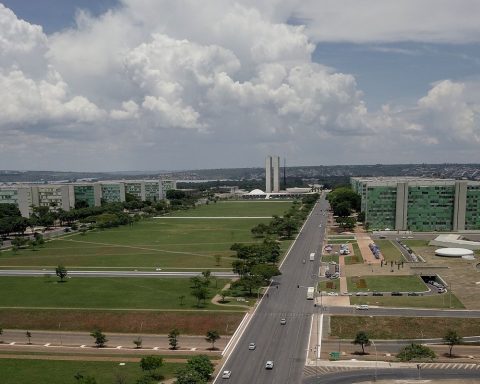An insatiable reader since adolescence, writer, cordelist and poet Jarid Arraes wanted to go beyond reading and writing in her relationship with books. The desire to share her interest in horror literature was what led her, at the beginning of this year, to found Encruzilhada, a reading club dedicated to discussing the most diverse aspects that a good horror story can cover.
“I wanted to show people that many complex issues, social issues and discussions about our existence, were represented in horror literature. So, I created the club to get closer to other people who also like horror, but not only that. There are many people at the club who had never read anything horror before.”
Born in Juazeiro do Norte, Ceará, the author of Whirlwind on a hot day, Brazilian Black Heroines in 15 strings and Broken body shares that cordel, school and the internet were important for his access to literature. “I used the internet to have more access, because in my city there was no bookstore where I could buy books”.
For the writer, reading clubs are important because they create communities of readers that can expand their reach and attract new people. This is because those who are not equally interested in reading, when they see people they know participating in meetings with other readers, may become interested and want to take part. “For me, then, the most important thing about book clubs is the community factor,” he says.
Reading clubs
According to Marcia Lisbôa Costa de Oliveira, professor at the Department of Literature at the State University of Rio de Janeiro (Uerj), clubs are historically meeting spaces. They occur in a collective and dialogical way, even when they are organized by public or private institutions.
“Reading clubs can bring those who currently position themselves as non-readers closer to books. Reading with a group that comes together based on certain affinities is also a great stimulus for developing a critical stance towards texts and the world, through contact with different knowledge and multiple points of view”, he highlights.
One example is the Reading Club at the Banco do Brasil Cultural Center (CCBB), in Rio de Janeiro. The club, created during the pandemic, started with a small group of readers in 2022. The following year, according to information from CCBB, the number of audiences grew by 163%, reaching 1,243 people. Between March and November this year, approximately 1,100 people participated in the meetings.
The meetings are mediated and curated by Suzana Vargas, author of Reading: A Pleasure Learningwhich highlights the potential of meetings as a cultural activity.
“The objective is to awaken people to the pleasure of reading. I have always defended the thesis that the support of reading does not matter, the important thing is that the reader realizes that reading is pleasurable, that reading is a matter of training and learning”, he highlights.
Throughout 2024, several writers passed through the CCBB, the last authors being Itamar Vieira Junior, from Tortho Plow, Save the Fire and Doramar or the odyssey: Stories;Jefferson Tenório, from Godless Estela, The Inside of the Skin and Where do they come from; and Frei Betto, from Militant Jesus: Gospel and political project in the Kingdom of God and Jrebel esus: Matthew, the Gospel of rupture.
“I really believe in reading as a pleasure, so when we include reading at CCBB, both in the form of a reading circle and in the form of a club, we are placing reading as a form of leisure within a cultural center”, highlights Vargas.
Challenges
According to the 6th edition of the Portraits of Reading in Brazil survey, the country had a reduction of 6.7 million readers. Released in 2024, the survey carried out by the Pró-Livro Institute also showed that the proportion of non-readers was greater than that of readers, for the first time in the historical series. In the three months prior to the survey, 53% of people had not read even part of a book — whether printed or digital — of any genre, including educational and religious books. Considering only entire books read in the same period, the percentage was 27%.
One of the main challenges for training readers, according to Jarrid Arraes, is precisely access to the book. “It means being able to transform literature into something interesting and accessible to all people, because many have the idea that books and literature are very intellectual things, very unattainable and only people of a certain class can relate to literature”, he says. “In fact, I think we already have many examples of people creating literature that can be more relatable to people”, he adds.
The cordelist emphasizes the need to demonstrate to people that they can identify with literature, which can also act as entertainment and fun.
“We need to take literature off a pedestal and publish more people with more diversity, from different regions of Brazil and who write in different ways so that there is a democratization of literature, starting with the publishing market itself. If we can’t make literature common and accessible to everyone in the publishing market, how are we going to be able to do this in society?”
In addition to identification with literature, Márcia Oliveira points to socioeconomic factors, highlighting characteristics of the daily lives of most Brazilians. According to the teacher, “those who work a lot, earn little, spend hours commuting between home and work, have little access to quality education and free or low-cost books, whether printed or digital, are unlikely to take up reading. , when he doesn’t even have time to live.”
Another relevant point for Márcia is access to income: although there are reading clubs in spaces that do not require the purchase of books or payment of monthly fees to participate, being part of them still demands time from readers, which is not always abundant.
“In Brazil, books have always been and still are for a few. Building a reading culture could be a huge transformation, but it takes time. We need state policies that promote access to reading and guarantee the availability of materials, in addition to school reading, as well as the mobilization of organized civil society to try to change the current scenario, in which almost half of the Brazilian population does not have the right guaranteed reading”, he assesses.
According to the 9th Book Retail Panel in Brazil, produced by the National Union of Book Editors (SNEL), the average book price in the country rose 12.20%, reaching R$51.48. In comparison, the minimum wage in 2024 is R$1,412.00
Encouraging reading
The research carried out by Instituto Pró-Livro in 208 municipalities also provided data on book consumption in relation to gender identity, age and region. The results indicate that the majority of readers are female (50.4%), with the 11 to 13 age group being the one that reads the most (81%). At this point, the report points out that textbooks were also considered for the investigation, which could be one of the reasons for the higher proportion of readers at this age.
Regarding the geographic aspect, the South Region had the highest proportion of readers (53%). Next come the North (48%), Central-West (47%), Southeast (46%) and Northeast (43%) regions, standing out with the smallest amount.
“It is difficult to explain this difference, given the complexity of the factors involved, however, the disparity between Brazilian regions is notable. This may be a clue to understanding the distribution between readers and non-readers in Brazil. The South Region, in contrast to the Northeast Region, has one of the lowest illiteracy rates in the country (3%) and has the third highest average per capita income in the country”, observes Márcia.
Given the data presented by the research, the professor reinforces the need for state policies aimed at promoting reading, focusing mainly on the training of teachers, librarians and reading agents, in addition to the importance of implementation programs for public libraries and to expand literary collections in schools. “As well as community spaces with different profiles, as well as campaigns to value reading as a source of pleasure and access to different forms of knowledge”.
Professor at the Institute of Letters at Universidade Federal Fluminense (UFF), Ana Isabel Borges states that “any activity that brings people closer to reading is positive, without a doubt”, including reading clubs. “I believe that reading clubs can work well if they can bring people together to talk about what they are reading. It’s not enough to say ‘I’m reading this’ or ‘I’m reading that’: you need to exchange ideas.”
In an interview with the report, the researcher states that, for the number of readers in Brazil to grow and become greater than the number of non-readers again, it is necessary to offer better living conditions, such as working hours of a maximum of eight hours daily wages, salaries that correspond to the current cost of living and “a little security in the future”, to reduce levels of anxiety and stress among Brazilians. “Without leisure there is no reading or other non-‘productive’ use of time, it’s just work and sleep”, he concludes.
*Intern under the supervision of Vinícius Lisboa


















